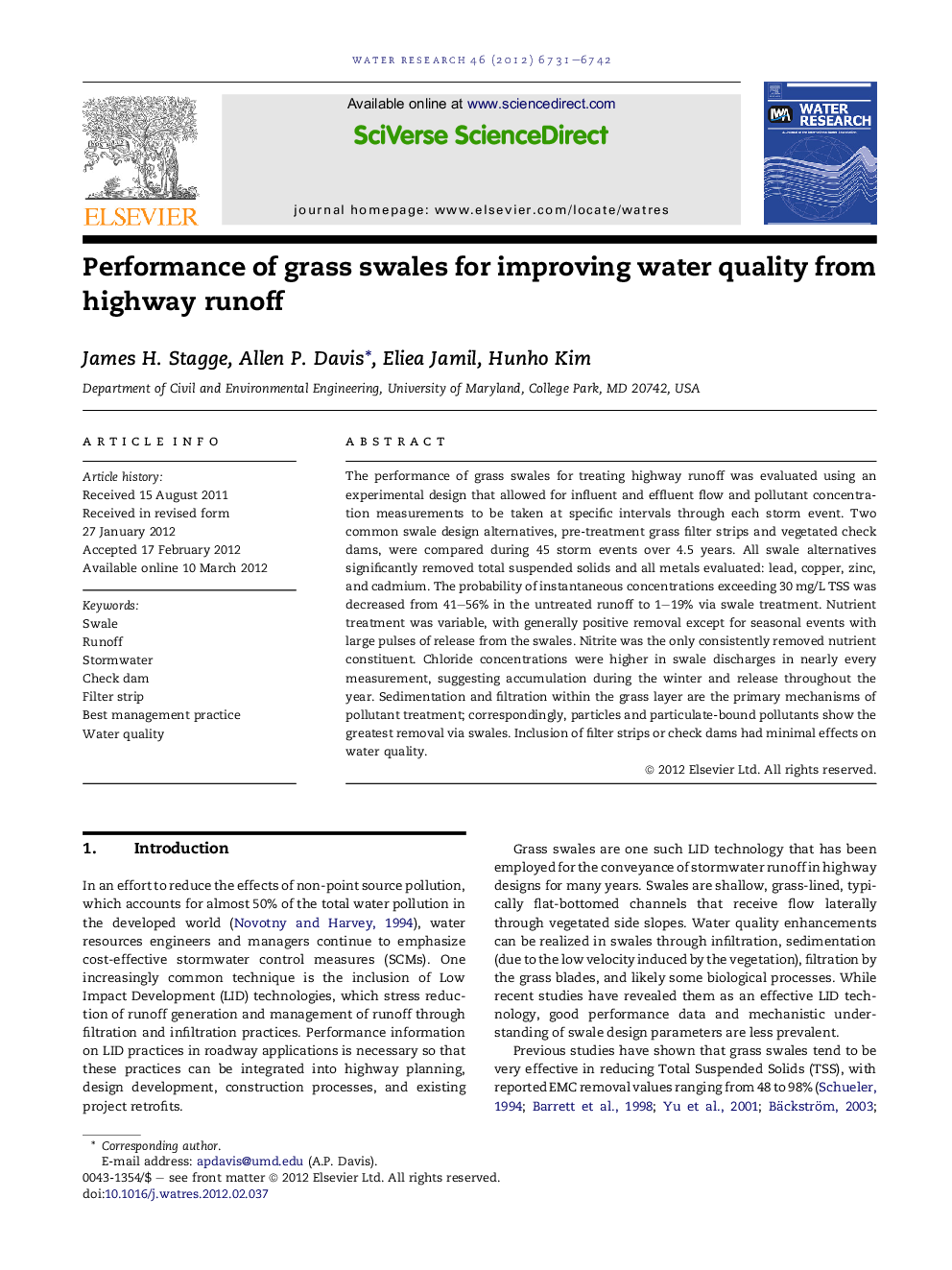| Article ID | Journal | Published Year | Pages | File Type |
|---|---|---|---|---|
| 4481877 | Water Research | 2012 | 12 Pages |
The performance of grass swales for treating highway runoff was evaluated using an experimental design that allowed for influent and effluent flow and pollutant concentration measurements to be taken at specific intervals through each storm event. Two common swale design alternatives, pre-treatment grass filter strips and vegetated check dams, were compared during 45 storm events over 4.5 years. All swale alternatives significantly removed total suspended solids and all metals evaluated: lead, copper, zinc, and cadmium. The probability of instantaneous concentrations exceeding 30 mg/L TSS was decreased from 41–56% in the untreated runoff to 1–19% via swale treatment. Nutrient treatment was variable, with generally positive removal except for seasonal events with large pulses of release from the swales. Nitrite was the only consistently removed nutrient constituent. Chloride concentrations were higher in swale discharges in nearly every measurement, suggesting accumulation during the winter and release throughout the year. Sedimentation and filtration within the grass layer are the primary mechanisms of pollutant treatment; correspondingly, particles and particulate-bound pollutants show the greatest removal via swales. Inclusion of filter strips or check dams had minimal effects on water quality.
Graphical abstractFigure optionsDownload full-size imageDownload high-quality image (104 K)Download as PowerPoint slideHighlights► The water quality performance of grass swales was evaluated in a field-scale study. ► Swales significantly reduced TSS and heavy metals mass and mean concentrations. ► Nutrient treatment was variable. ► Inclusion of check dams or a filter strip pre-treatment had minimal impact. ► Pollutant-duration curves are introduced to demonstrate dynamic impacts.
